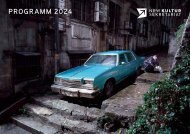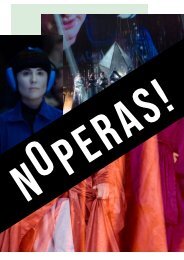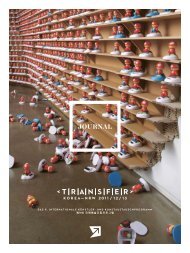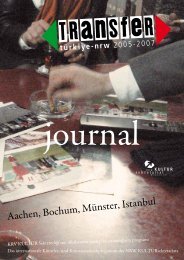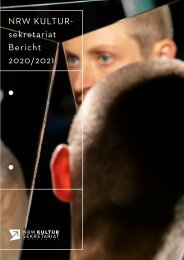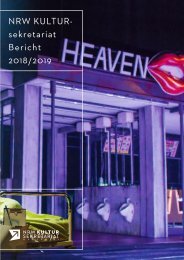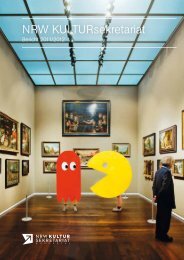Tanzrecherche NRW: Classical Tradition / Modern Society by Mirjam Otten
A handbook for creators and decision-makers on keeping classical ballet relevant
A handbook for creators and decision-makers on keeping classical ballet relevant
You also want an ePaper? Increase the reach of your titles
YUMPU automatically turns print PDFs into web optimized ePapers that Google loves.
SOCIAL DEVELOPMENTS<br />
How a public will receive a certain ballet piece is partially dependent on wider<br />
social developments and concerns (Castro, 2018). Fisher (2003) credits this<br />
mechanism with The Nutcracker’s popularity in 20th century America. The<br />
experience The Nutcracker gave the American public — immersing them in an<br />
exciting, partly exotic journey within the safe and orderly context of the dream tale<br />
tamed in the end — played to a stable family community and a simple celebration<br />
of tradition aligned with social desires and communal nostalgia at a time of vast<br />
industrial change (Fisher, 2003). In a similar manner, early Spanish reviews of The<br />
Rite of Spring praised its democratic nature after the establishment of the Second<br />
Republic in Spain (Castro, 2018). Alastair Marriott infers that changes in social<br />
context mean that classical productions will appear differently to different<br />
generations. In this process, he values the visions of the past seen in traditional<br />
works as conversation-starters and mirrors of the change that society has<br />
experienced since their inception. This is particularly pertinent when thinking about<br />
how changing acceptability standards are increasingly revealing problematic<br />
representations and storylines in many classical ballet pieces. Andrew McNicol<br />
points out that all forms of art are subject to changed perceptios rooted an evolving<br />
society and nonetheless remain important reflections of a past way of life. To him,<br />
this process can be a great source of creativity as new works emerge that tackle<br />
outdated elements in traditional productions.<br />
Beyond the ways in which a work is perceived <strong>by</strong> the public, Whatley (2013) argues<br />
that the practice of dance itself will bear a reflection of a changing society, saying<br />
that ‘dancing bodies embody particular pedagogies and philosophies of movement’.<br />
He questions in how far these realities make ways into what is consiered heritage<br />
due to their temporal nature and rootedness in an evolving social and bodily reality.<br />
Even so, this line of thought would advocate a dance practice that favours<br />
increased agency of the dancing artist, improvisation and regular renewal of<br />
choreographic aesthetics so as to make room for the inherent modernity of the<br />
moving body to emerge. How this can be done is discussed in the section ‘Good<br />
Practice’.<br />
<strong>Classical</strong> <strong>Tradition</strong> // <strong>Modern</strong> <strong>Society</strong> 26



